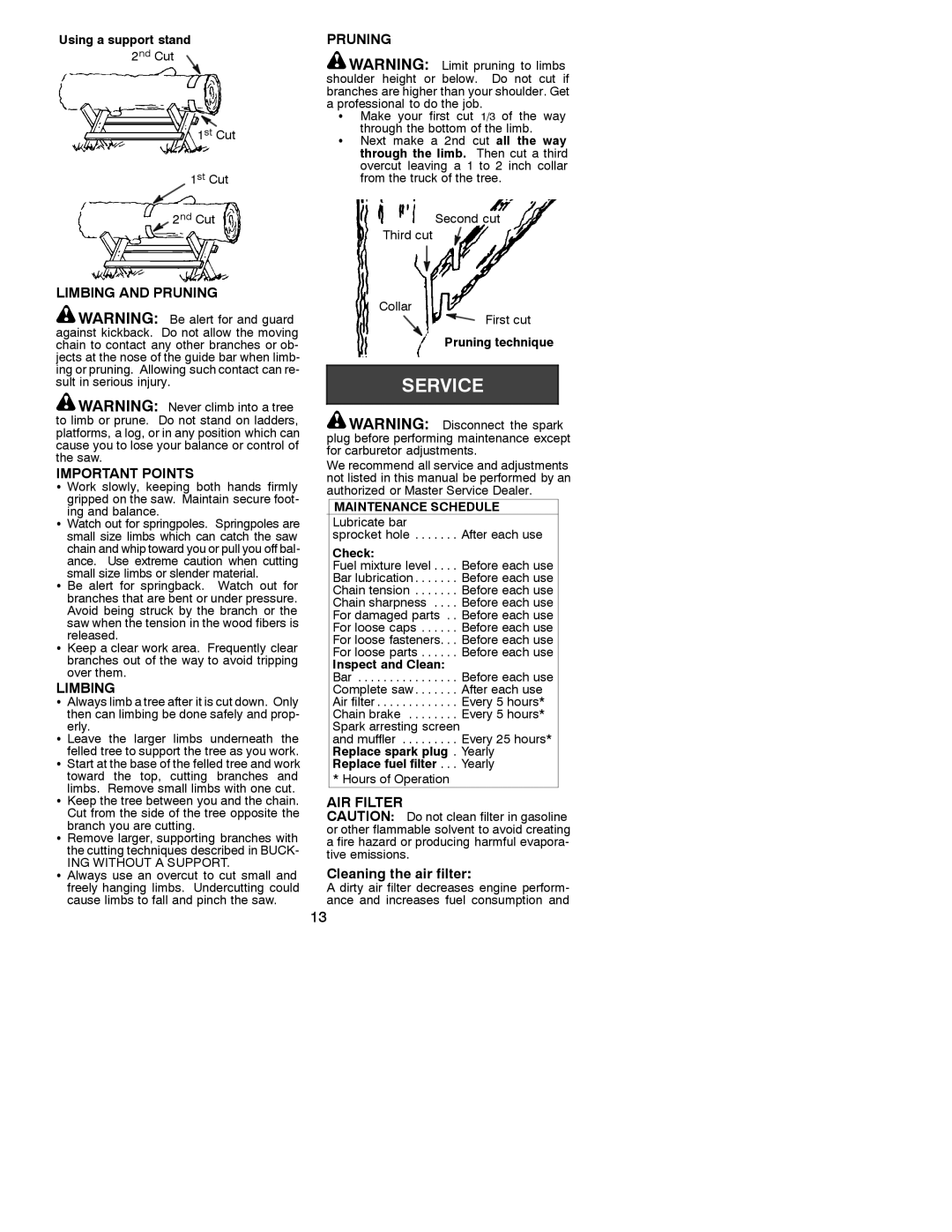1950, 2055 specifications
The Poulan 1950 and 2055 chainsaws represent a blend of power and precision, designed to cater to both professional loggers and home users alike. These models have made a significant mark in the realm of outdoor power equipment, thanks to their robust features and cutting-edge technologies.Starting with the Poulan 1950, this chainsaw is equipped with a 50cc engine, delivering plenty of power for a variety of cutting tasks. Its lightweight design allows for maneuverability and ease of use, making it a favorable option for detailed pruning as well as heavier cutting jobs. One of the standout features of the 1950 is its automatic oiling system, which ensures that the chain receives adequate lubrication during operation, extending the life of both the chain and the bar. This model also features a simple pull-start mechanism that enhances user convenience, allowing for quick starts even in cold weather conditions.
Moving on to the Poulan 2055, this chainsaw is slightly more powerful, boasting a 55cc engine that provides increased torque for more demanding tasks. Designed with advanced technologies, the 2055 not only improved performance but also user comfort. It is fitted with a vibration-dampening system, which minimizes vibrations transferred to the user’s hands, reducing fatigue and strain during extended use. Furthermore, the 2055 features an easy-to-access air filter and spark plug, simplifying maintenance and upkeep, which is essential for long-term performance.
In addition to their respective power sources, both models utilize a chain brake system designed to enhance safety. This feature automatically stops the chain rotation if the saw is accidentally dropped or if a kickback situation arises. The ergonomic handles and lightweight construction of both chainsaws make them suitable for a wide range of users, from novices to seasoned professionals.
In summary, the Poulan 1950 and 2055 chainsaws are powerful, efficient, and designed with the user in mind. They combine advanced engineering with practical features, ensuring that whether tackling small garden tasks or larger jobs, these chainsaws deliver consistent performance. With their reliability and ease of use, they have certainly carved out a reputable niche in the world of outdoor power equipment.

